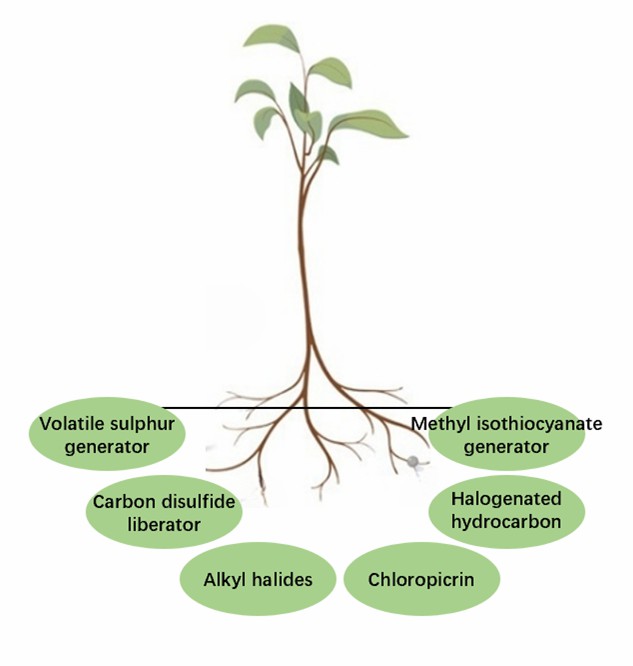Analysis of Nematicide Multi-Location Inhibition of Nematodes
Fumigant nematicide, which can also be called soil disinfectant, is a nematode multisite inhibitor. It is the earliest type of nematicide developed and applied. It may also be referred to as a soil disinfectant with the advantages of broad spectrum, high efficiency, low residue, and cost of use against soil nematodes. This type of nematicide is usually applied through an irrigation system or soil injection equipment before sowing or transplanting. It can kill a variety of pests such as plant nematodes, soil-borne diseases, underground pests, rodents, and weeds by volatilizing and spreading in the soil directly or after decomposition.
Lifeasible is a leading provider of comprehensive, high-quality services for plant sciences. We provide analysis for nematicide multi-location inhibition of nematodes to customers worldwide. We look forward to working with our customers to discover the secrets of life sciences.
Analysis of Halogenated Hydrocarbon Fumigants
- Halogenated hydrocarbon nematicides are an early class of nematicides used in production. It is generally considered that nematodes are poisoned through alkylation or oxidation. Initially, nematodes show excessive activity, followed by anesthesia and eventually death.
 Fig.1 Schematic diagram of nematode-killing by multi-locus inhibition of fumigants.
Fig.1 Schematic diagram of nematode-killing by multi-locus inhibition of fumigants.
- Lifeasible provides analysis of halogenated hydrocarbon nematicides, including alkylation and oxidation of halogenated hydrocarbons. We provide an analysis of alkylation reactions, including reactions of halogenated hydrocarbons with the hydroxyl and amino groups of proteins in living organisms. We also help analyze the oxidation of halogenated hydrocarbons at the Fe ion site of the cytochrome chain, which impairs nematode respiration.
Analysis of Isothiocyanic Acid Fumigants
- Isothiocyanic acid nematicides are carbamoylated reagents, including methyl isothiocyanate (MITC) and allyl isothiocyanate (AITC). It is generally considered that their nematicidal action is achieved by carbamoylation with the nucleophilic site in the enzyme molecule.
- We provide analysis services for nematocidal effects of methyl isothiocyanate, such as inhibition of cell division, inhibition of DNA, RNA, and protein synthesis, impairment of biological respiration, etc.
- We also provide analysis services for nematocidal effects of allyl isothiocyanate, such as inhibition of mitochondrial complex I (NADH dehydrogenase) and IV (cytochrome c oxidase), which leads to energy deficiency, increased production of reactive oxygen species, and ultimately tissue dysfunction.
Analysis of Other Fumigants
- There are also a variety of fumigants that have good control effects on plant parasitic nematodes, such as sulfuryl fluoride, dimethyl disulfide, and others.
- We provide analysis services for the nematocidal effects of sulfuryl fluoride, including disrupting the glycolysis process, preventing fat metabolism, and reducing oxygen intake by the eggs. We also help our clients analyze the nematocidal mechanism by dimethyl disulfide, such as inhibiting mitochondrial respiratory chain complex IV (cytochrome oxidase) production, decreasing intracellular ATP concentration, and reducing neuronal activity.
Lifeasible provides fast turnaround, high-quality services at competitive prices for customers worldwide. Our advanced technical platforms can help our clients solve the problems they may encounter in research based on years of experience. If you are interested in our services or have any questions, please feel free to contact us or make an online inquiry.
For research or industrial raw materials, not for personal medical use!
 Fig.1 Schematic diagram of nematode-killing by multi-locus inhibition of fumigants.
Fig.1 Schematic diagram of nematode-killing by multi-locus inhibition of fumigants.